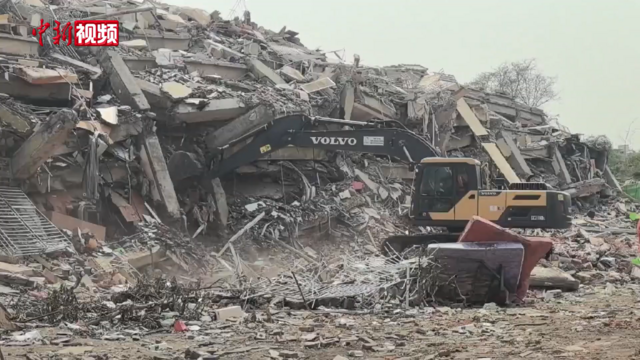A powerful 7.7 magnitude earthquake in Myanmar has killed at least 3,085 people, injured 4,715, and left 341 missing, according to figures released Thursday by the country's military government. The epicenter was near Mandalay, Myanmar's second-largest city, where the devastation has crippled infrastructure, destroyed buildings, and deepened a worsening humanitarian crisis already fueled by ongoing civil war.
The disaster prompted Myanmar's ruling military to declare a temporary ceasefire through April 22, in a move aimed at facilitating relief efforts. "To show compassion for people affected by Friday's quake," the ceasefire was announced late Wednesday on state-run broadcaster MRTV. Armed resistance groups opposed to military rule had earlier declared their own unilateral pauses in fighting.
The World Health Organization reported that four hospitals and a health center were completely destroyed, with another 32 hospitals and 18 health centers partially damaged. "Thousands of people are in urgent need of trauma care, surgical interventions and treatment for disease outbreaks," the United Nations said.
UN spokesman Stephane Dujarric warned that access to affected areas remained severely limited. "People affected continue to need urgent healthcare and medical supplies, safe drinking water, food and other critical items," he said. "Tents and temporary shelter are needed, as well as latrines and other hygiene items, to prevent disease outbreaks."
India has deployed a mobile hospital, and Russia and Belarus have jointly set up a field unit in Mandalay. In total, 17 countries have dispatched supplies or personnel, with more than 1,550 international rescuers on the ground, according to the Myanmar military.
Rescue efforts have produced dramatic scenes, including the recovery of two survivors from a hotel in Naypyitaw nearly five days after the quake. Naing Lin Tun, 26, was pulled from beneath the rubble by Turkish and local crews using an endoscopic camera and jackhammer. "He appeared weak but conscious," local authorities said. A second man was rescued from the same site more than 121 hours after the quake struck.
Elsewhere, Malaysian and local rescue workers freed a 47-year-old school principal from a collapsed guesthouse in Sagaing township, near the quake's epicenter. A fourth survivor was rescued in Mandalay Wednesday night.
The earthquake also rocked neighboring Thailand, where 22 people were killed and 35 injured after a high-rise under construction collapsed in Bangkok. Governor Chadchart Sittipunt said rescuers detected possible signs of life beneath the rubble, but no survivors had been confirmed by day's end.
The humanitarian crisis precedes the earthquake. The United Nations estimates more than 3 million people were already displaced and nearly 20 million in need of assistance due to conflict since Myanmar's military seized power from the elected government of Aung San Suu Kyi in 2021.
Despite the ceasefire declaration, fighting has reportedly continued in some areas. Local media in Kachin state reported military attacks on Thursday, although these could not be independently verified. The Kachin Independence Army, a prominent ethnic militia, declared its own ceasefire Wednesday but retained the right to defend itself.
Tensions escalated further this week after an opposition militia accused the military of attacking a convoy of nine Chinese Red Cross vehicles in Shan state. The Ta'ang National Liberation Army said the convoy was delivering aid to Mandalay and had notified military authorities of its route.
Military spokesperson Maj. Gen. Zaw Min Tun denied receiving advance notice and claimed troops had only fired into the air to stop a noncompliant convoy. The International Federation of Red Cross and Red Crescent Societies said it was investigating the incident.
International pledges of aid have poured in, with the U.S. announcing $2 million in emergency assistance and dispatching a three-person assessment team. China and India, Myanmar's powerful neighbors, have also contributed significantly, sending rescue teams and field hospitals.
Information remains limited from remote areas hardest hit by the quake. In Singu township, the Democratic Voice of Burma reported that 27 gold miners were killed in a cave-in. In the Inle Lake region, popular among tourists, many residents were killed when stilted homes collapsed into the water, according to state-run Global New Light of Myanmar.






